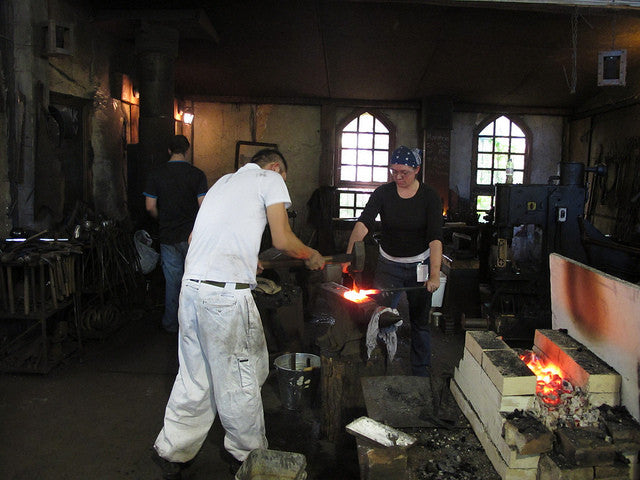Your Cart is Empty


Forging a traditional Japanese sword is a methodical process that takes several days to complete.
The swordmaking process begins with the creation of steel ( kera) in a large smelting pot mixed with wrought iron and pig iron. The steel is then separated by its carbon content, with low-carbon steel used for the core of the blade and high-carbon steel used for the blade's exterior.
After making and separating the steel, the swordsmith begins to heat, hammer and fold it. The process of folding steel for use in Japanese swordmaking is known as shita-kitae. Swordsmiths would perform shita-kitae up to 10 times, creating as many as a thousand individual layers.
Folding steel may sound somewhat impractical or even unnecessary. After all, what benefits does folding the steel really offer? Surely, it can't improve the quality of the sword, right? Well, there are several reasons why traditional Japanese swordmaking involves folding steel. Before getting into the details, it is important to remember that steel quality in old days was very poor and smiths needed to come up with ways to deal with it.
Alternating Layers of Hardenability
By folding steel, swordsmiths could achieve alternating layers of differing hardenability. The metal would be quenched with oil or water between folding; therefore, promoting a stronger metal. The layers of high carbon would become exceptionally strong when compared to the medium and low-carbon layers.
Eliminated Impurities
Another reason why Japanese swords are made with folded steel is that it helped to eliminate any impurities in the metal. If a batch of steel contained an abundance of impurities, it would likely have a negative impact on the quality and strength of the sword. Impurities often led to "weak spots" in the sword -- a problem that was often avoided through shita-kitae.
Homogenization
The single most notable benefit of folding steel for swordmaking is its ability to homogenize the metal. Elements such as carbon are commonly found throughout steel. If significant amounts of carbon settle in certain areas of the steel, it can make the blade weak and brittle. Swordsmiths discovered, however, that folding and quenching the steel multiple times creates a stronger a blade due to homogenization. The carbon deposits in the steel were evenly distributed throughout the steel, reducing the risk of weak spots.
Pattern Grain
Last but not least, folding steel for use in Japanese swordmaking helps to create its unique pattern grain. While aesthetic in nature, swordsmiths take pride in their ability to create distinct pattern grains. Shita-kitae is a critical stage that allows for the formation of these patterns.
Modern Steel
It should be noted that modern steels such as L6 that MAS uses do not contain any impurities and it is already very homogeneous. Thus, folding actually makes the blade weaker if modern alloy steel is used, although many Chinese sword forges seem to fold modern steel just for marketing reasons.
Photo credit: Tamahagne Arts